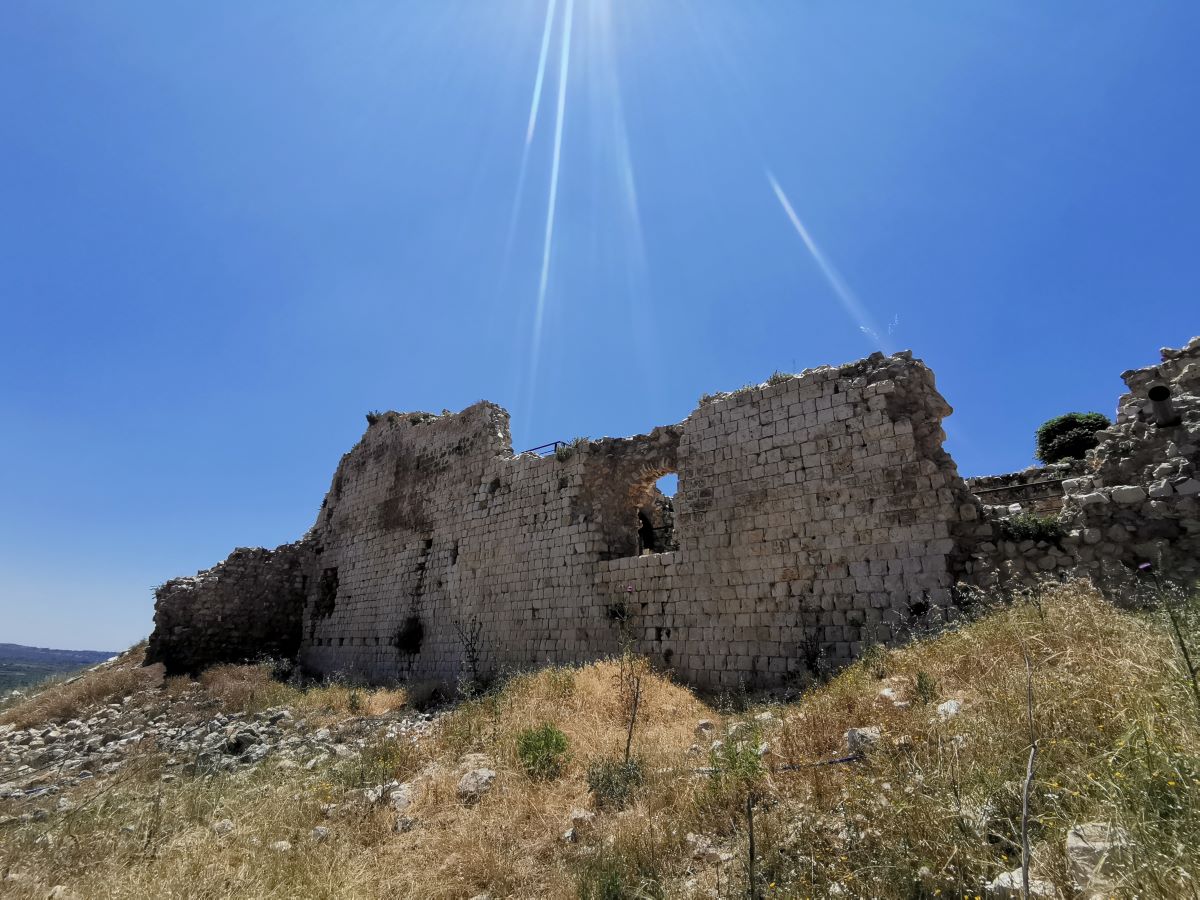Chamaa village features an Ottoman era fortress. It provides one of the few cases in which a medieval fortress proved of military value and utility in modern warfare as well, as its late 20th-century history shows.
Etymology
There are at three known designations of the site:
Qala’at Chamaa, meaning the castle of Chamaa. The word “Chamaa” derives from “Shamoun Al-Safa”, a prophet praised by the Muslim Shiaa and whose mausoleum is erected within the castle. Shamoun Al-Safa is also believed to be Simon Cephas, the original aramaic name of St Peter.
Sam’a is the designation of the village of Chamaa during the Ottoman era.
Scandelion is a designation given to an area where Alexander the Great founded a settlement or a castle during his siege of Tyre. Scandelion apparently also had a crusader fortress erected on its hill from which nothing remains. Thus, some scholars attribute the castle of Chamaa to the nearby Scandelion; However, this theory remains debatable.
Timeline
1772 – The earliest mention of the site is attested to an ottoman era document. It includes the relation of an emigrant from South Lebanon referring to Chamaa : “In Chamaa there is the tomb of Chamoun El Safa, the apostle of Isa (Jesus) and he has a great maqam”.1751 – The fortress was built as part of a larger fortification network by sheikh Waked, the representative of the local ruling Al-Saghir feudal family.
1781 – According to Arab sources, the Ottoman governor Jazzar Pasha had his senior commander Salim Pasha Al-Kabir demolish the castle after killing Al-Nassar following a power-struggle over the region.
1799 – The fortress was reused by the Ottomans for military purposes.
1875 – Western travelers reported that the castle’s towers were inhabited by farmers and its sections have been transformed into stables for animals.
1982 – During the Israeli invasion of Lebanon, the IDF transformed the castle into their HQ. Several sections were either demolished to allow tanks and equipment storage or transformed into prisons.
May 25th, 2000 – The castle was abandoned by the IDF during its withdrawal from Lebanon.
July 2006 – The castle was razed to the ground following airplane raids by the IDF.
2014 – 2019 – The castle was financed by the Italian government and restored by Lebanese archeologists.
Structure
Since its inception, the castle saw several restoration works due to the damages that it incurred following the wars between the Ottoman era and 2006.
Measuring around 100x90m, the fortress has a semi-rectangular shape.
Defended by 7 towers, it has two entrance, which gates were removed by the IDF in the 1980s to allow its tanks to be stored in the premises of the castle.
What remains of the structure today are the towers, vaulted galleries, storage rooms, bathrooms, prisons, stables, and an olive press. Arrow slit windows can be seen around the fortress’ walls, as well as stones with bossage.
Recent studies showed that the fortress bear structural elements that date back to the Byzantine, Crusader and Mamluk era. Could there have been an earlier structure built on site? We will have to wait for further excavation works to have a concrete answer.
Karim Sokhn
Tour Operator & Tour Guide
References
La Syrie d’aujourd’hui. Voyages dans la Phénicie, le Liban et la Judée 1875-1880.
https://en.shafaqna.com/92596/religious-site-in-lebanon-attracts-shia-muslims-photo/Intrabasin.






